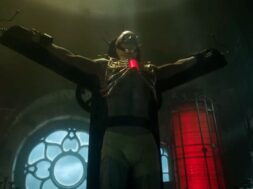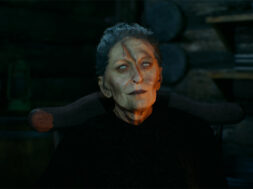Butcher Block is a weekly series celebrating horror’s most extreme films and the minds behind them. Dedicated to graphic gore and splatter, each week will explore the dark, the disturbed, and the depraved in horror, and the blood and guts involved. For the films that use special effects of gore as an art form, and the fans that revel in the carnage, this series is for you.
Often described as the surreal intersection of David Cronenberg’s body horror meets David Lynch’s Eraserhead, Shinya Tsukamoto’s Tetsuo: The Iron Man is wholly unique. An influential piece of filmmaking in native Japan and a cult hit overseas, Tsukamoto’s take on body horror plays like a cyberpunk fable that disturbs at every possible turn. With a runtime clocking in at just over an hour, that’s saying a lot.
The plot premise sounds simple on paper: a metal fetishist gets hit by a car and killed in a hit and run. The metal fetishist gets revenge from beyond by slowly turning his killer, a businessman, into a grotesque hybrid of tech and metal that threatens to consume him entirely. It’s the way that Tsukamoto relays his cautionary tale of losing one’s humanity amidst a concrete jungle that makes this narrative complex. The black and white expressionism, the industrial setting, the aural assault by way of metal percussions and screeching metal synth, and the music video-style visuals make this body horror entry stand out.
The short run time means no time is wasted getting straight into the gruesome bits. The metal fetishist, played by Tsukamoto, opens the film with grisly imagery; he’s so obsessed with tech and metal that he cuts open his leg and inserts a metal rod. It’s rusted, though, and the crude surgical job means that the wound gets infected. It’s the startling sight of maggots writhing in the wound that drives him into the road, where the businessman’s car runs him down. The businessman’s transformation into a mutated bio-tech thing begins almost instantly.

Tsukamoto was a self-professed student of Cronenberg’s films, which might explain the prominent themes of sexuality in addition to the body horror. Like the sadomasochism of Videodrome or the voyeuristic arousal of Crash, Tetsuo uses sexuality to heighten the body horror. The businessman dreams of his girlfriend, who happened to be in the car with him during the hit and run, sodomizing him with phallic tech pieces. That’s before his phallus transforms into a massive drill. Yes, it’s as insane as it sounds. And all of it has a purpose in Tsukamoto’s message.
Tetsuo is an arduous display of DIY filmmaking. The first of Tsukamoto’s films to be shot in 16mm, Tetsuo was filmed primarily in his apartment over 18 months on a shoestring budget. Nearly all of the cast and crew lived with him on set for much of production, which meant tensions rose as time wore on and the budget depleted. Many crew members dropped out throughout filming, and by the end, Tomorowo Taguchi, who played the businessman, was picking up extra duties like running the lighting. Aside from writing, directing, and playing the Metal Fetishist, Tsukamoto also edited, produced, handled art direction, and shared cinematography duties with Kei Fujiwara, who played the businessman’s girlfriend on screen.
Fujiwara went on to stake a claim on shocking and gory Japanese horror with Organ and Id after this film’s creation.
In the end, Tetsuo remains a kinetic entry in body horror, unlike anything else. Though the influences from Cronenberg and Lynch are overt, they’re mere stepping stones in the creation of something far stranger and singular. A cyberpunk metamorphosis into a living heap of scrap metal fueled by an industrial assault on the senses, it’s easy to see why Tsukamoto’s film remains a cult favorite all these years later.










